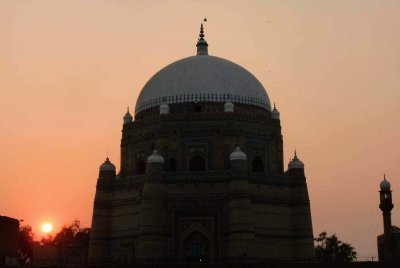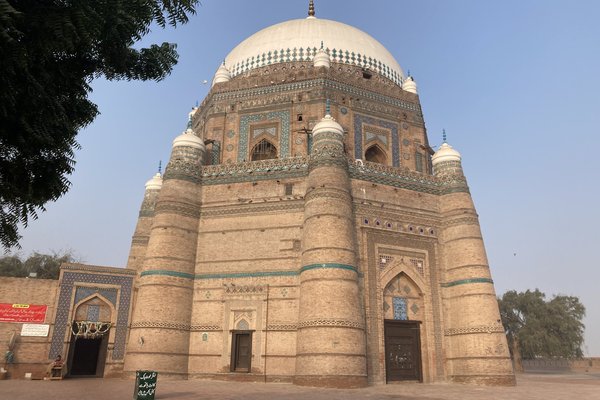Pakistan
Tomb of Shah Rukn-e-Alam
The Tomb of Shah Rukn-e-Alam, located in Multan, was built between 1320 and 1324 by Ghiyath al-Din, the first ruler of the Tughluq dynasty in the Sultanate of Delhi. It is the mausoleum of the Sufi saint Shah Rukn-e-Alam and his descendants. The tomb is considered the earliest example of Tughluq architecture. It influenced the style of later monuments in the Indian subcontinent.
This is a double entry on the Tentative List - it covers the same as Tomb of Hazrat Rukn-e-Alam, Multan (1993).
Site Info
Official Information
- Full Name
- Tomb of Shah Rukn-e-Alam (ID: 1884)
- Country
- Pakistan
- Status
-
On tentative list 2004
Site history
History of Tomb of Shah Rukn-e-Alam
- 2014: Revision
- Renomination under the same name
- 2004: Added to Tentative List
- Added to tentative list
- Type
- Cultural
- Criteria
Links
- UNESCO
- whc.unesco.org
All Links
UNESCO.org
- whc.unesco.org — whc.unesco.org
Community Information
- Community Category
- Religious structure: Islamic
- Secular structure: Burial
Travel Information
Recent Connections
News
No news.
Community Reviews
Show full reviews
The city of Multan has several early monumental Sufi tombs, a bit similar to Uch Sharif which lies 135 km to the south. Singled out here is the tomb of Shah Rukn-e Alam, built in the 1320s and considered the earliest example of Tughluq architecture. The Tughluqs were a Turkish tribe that ruled Delhi at the time.
It’s an octagonal tomb with tapering walls. The exterior brickwork is embellished with alternating layers of wooden beams and glazed turquoise and blue tiles. You have to concentrate on it for some time to see the fine details, but it is spectacular. Its design inspired the later tombs of Uch Sharif. It is completely preserved (although the original had more tiling inside) and kept in good condition by the Auqaf Department of Punjab Province (which won them an Aga Khan Award in 1977).
The tomb still receives a steady stream of worshippers. They bring rose petals bought from a vendor at the entrance to throw on the coffin.
I don’t see this tomb becoming a WHS on its own (especially with Uch Sharif looming), but when they extend the scope of the site to the ‘Historic Islamic city of Multan’ its chances would certainly improve. Multan was an important medieval trade city connecting the Indian subcontinent with the wider Islamic world and it was covered by Ibn Battuta on his travels. We visited three other notable buildings in this city (and there are many more):
- Tomb of Baha-ud-Din …

Another day in Pakistan ….. another tomb! But this one was a bit special architecturally and, unusually for Pakistan, had been restored (1971-7) and still seemed in reasonable condition. We were in the southern Punjabi city of Multan which Wiki describes as “the City of Sufis or City of Saints ….. because of the large number of shrines and Sufi saints from the city”. But we were concentrating on just 2, of which the more important was the Tomb of Shah Rukn-i Alam. Indeed, so important must Pakistan regard this site, that it has placed it on its Tentative list twice in a double entry! I have chosen to review it in its 2004 rather than its 1993 manifestation on the assumption that the latter will eventually get removed in some “clean up” operation.
The tomb is regarded as an “unmatched pre-Mughal masterpiece” – but who was the guy whose tomb it is? Well Shah Rukn-i-Alam is yet another of that plethora of Sufi “saints” whose names will probably not fix themselves in your mind as you visit their tombs! It appears that he was the grandson of yet another such teacher – Baha-ud-din Zakaria whose grandiose tomb is situated around 400 metres away and was the other one we visited in Multan.
Now, a reasonable understanding of the history of the Indian sub-continent helps considerably in appreciation of the succession of cultural inscribed and T List sites one will see in Pakistan. But …
Keep reading 0 comments
